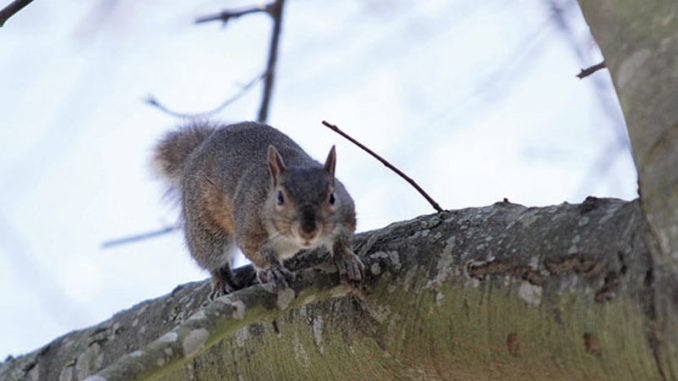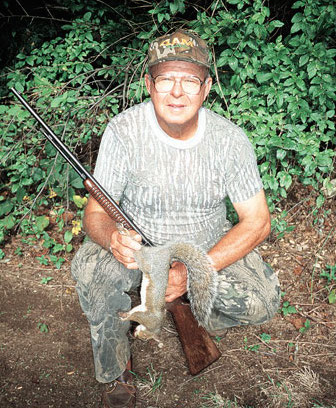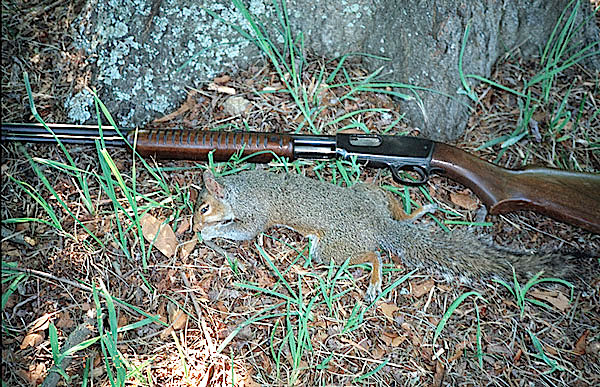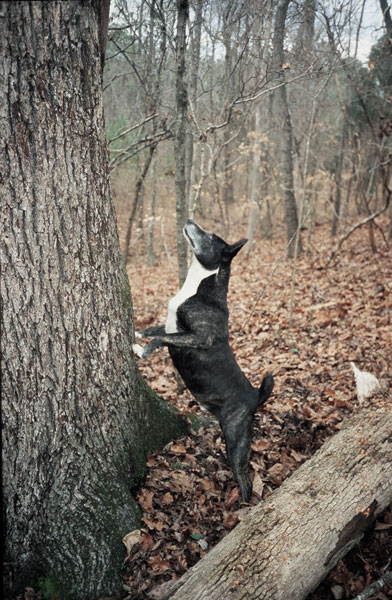
Squirrel hunting is something of a lost art, but it’s still a great way to spend a day in the woods. Here are some tips to make your next trip a success.
The art of squirrel hunting goes back further than most hunters care to remember.
Most of us remember accounts of frontiersmen killing squirrels with the remarkably accurate “Kentucky Long Rifle” — a process called “barking” made popular by Daniel Boone. He was reputed to have been one of the first outdoorsmen to kill a squirrel in that manner.
To “bark” a squirrel, a hunter took careful aim at the edge of the limb just under a stationary squirrel’s head. At the shot, the bark from the limb flew up and rendered the squirrel unconscious, sometimes even killing it. Barking was used only by the best marksman. But the result was a perfect one. Even better than a head shot that damaged a relatively small amount of meat, barking a squirrel saved the brains, which were considered a delicacy by those who hunted them.
It is doubtful that many modern squirrel hunters bark these tree dwellers today. However, the head shot is still one of the most popular among riflemen. A trusty .22 rifle topped with a 4X scope is ideal for hunting squirrels. But a shotgun is a close second choice if the leaves are still on the trees. A moving target with a rifle, especially when trees are full of leaves, is difficult at best. Situations such as this are ideal for a shotgun loaded with No. 7 ½ shot. After the leaves fall, bushytails are much more vulnerable.
Try these tricks when squirrels disappear
Do you see all sorts of squirrels before the season opener or when you are hunting something else? When you decide to hunt squirrels, do they elude you? If Mr. Bushytail is outsmarting you, try some of these tricks to get him back in your sights.

In squirrel hunting, what goes around comes around. And that’s not just a figure of speech. How often have you spotted a squirrel, and before you can get your gun up, he flips to the opposite side of the tree?
Hubert Brice of Winnsboro, S.C. solved that problem years ago by carrying in his pocket a 60-foot length of stout cord in his pocket. He would tie the cord to a bush or small tree. Then, he’d walk to the opposite side of the tree the squirrel was in. The squirrel would run around the tree as he walked past. Brice would wait a full minute, then yank on the cord to shake the tree it was tied to. Mr. Bushytail would run around the tree again, giving Brice an easy shot.
Still-hunting through the woods at a snail’s pace is a good tactic. Brice was a master at this. He would only walk a few steps at a time, using his eyes to look far ahead and spot his quarry long before it was time to shoot. By using terrain features such as creek banks or wide-trunked trees, he could slip into position for a shot. While still-hunting, Brice stayed on constant alert for fresh cuttings under trees where squirrels had been eating nuts or acorns.
More tactics to try when squirrel hunting
He would find a tree within easy shooting range and sit facing the tree below which he’d found the cuttings. Motionless, he would scan the trunk of the tree all the way to the top. Then he’d look at the first limb on the left side of the tree and scrutinize it all the way out to the tip. He would look closely for an ear, part of the body or a tail hanging below the limb.
He repeated the visual inspection for every limb on both sides of the tree. When he spotted his quarry, he would wait a few minutes to see if the squirrel would move on its own and give him a shot. To speed the process along, sometimes he would use a slingshot to shoot small rocks above and behind the squirrel, hoping the rocks rattling through the limbs would make it move.

A spin-off of this same tactic is leap-frogging when two hunters are hunting together. They would move 20 to 30 yards apart, then walk parallel toward each other. The hunter on the left would slowly walk 50 steps before stopping, leaving the other hunter standing behind. After waiting two minutes, the hunter on the right would move 50 steps, and then stop. This sequence would be followed until the area to be hunted was completed or a squirrel was killed.
Listen closely when hunting squirrels
With one hunter moving at a time, the other hunter stood an excellent chance of seeing movement missed by the first hunter. One of the prime places to use this tactic is when a creek separates the hunters.
Another of Brice’s tricks was to listen intently for something falling through the leaves. Upon hearing something, he would direct his full attention to the source of the noise. As a squirrel gathers acorns, some fall before he can get a firm grip on them. In the quiet woods, a falling nut makes a lot of noise. More subtle sounds are made when the squirrel eats the nut and discards the pieces of shell. By homing in on such sounds, Brice could locate targets he could not readily see. When a limb moves out of rhythm with the rest of the limbs, zero in on that spot. Chances are that a squirrel is there.
By puckering up your lips tightly and sucking air through them, you can make a sound like a squirrel as it barks. It is not unusual for other squirrels to bark back or move to try and see what is making the sound.
Carry some coins
If Brice didn’t seen a squirrel within a reasonable length of time, he had another trick up his sleeve. He would take three quarters from his pocket, place two of them in one hand between his thumb and forefinger. With the third quarter in his other hand, he would shove the quarter in between the other two. Pressing hard on the other two, he would quickly pull the third quarter out, making a clicking sound. As he repeating the sequence several times, often a squirrel would move to see what made the noise, thinking one of his buddies has found a nut and is cracking it open.
When you shoot a squirrel, let it lay for a period of time. You might get a chance to shoot a second or third before you move to another spot.

When you retrieve your squirrel, step on its head to make sure it is dead. Not only is this the humane thing to do but it might just save you from a painful bite!
Walking through the woods, any time Brice saw a squirrel nest in a tree small enough that he could shake it by pushing against it with his foot, he would. The same was true when a vine was growing through a nest; he would always shake it. If the nest was low enough, he would throw a stick at it. Frequently, more than one occupant would erupt, making for some fast action
When a squirrel runs into a hole in the tree, all is not lost. Beat on the side of the tree with a stick and often the occupant will emerge. Shoot fast, because he won’t fall for this trick a second time.



Be the first to comment